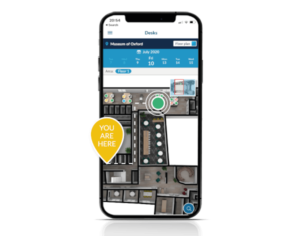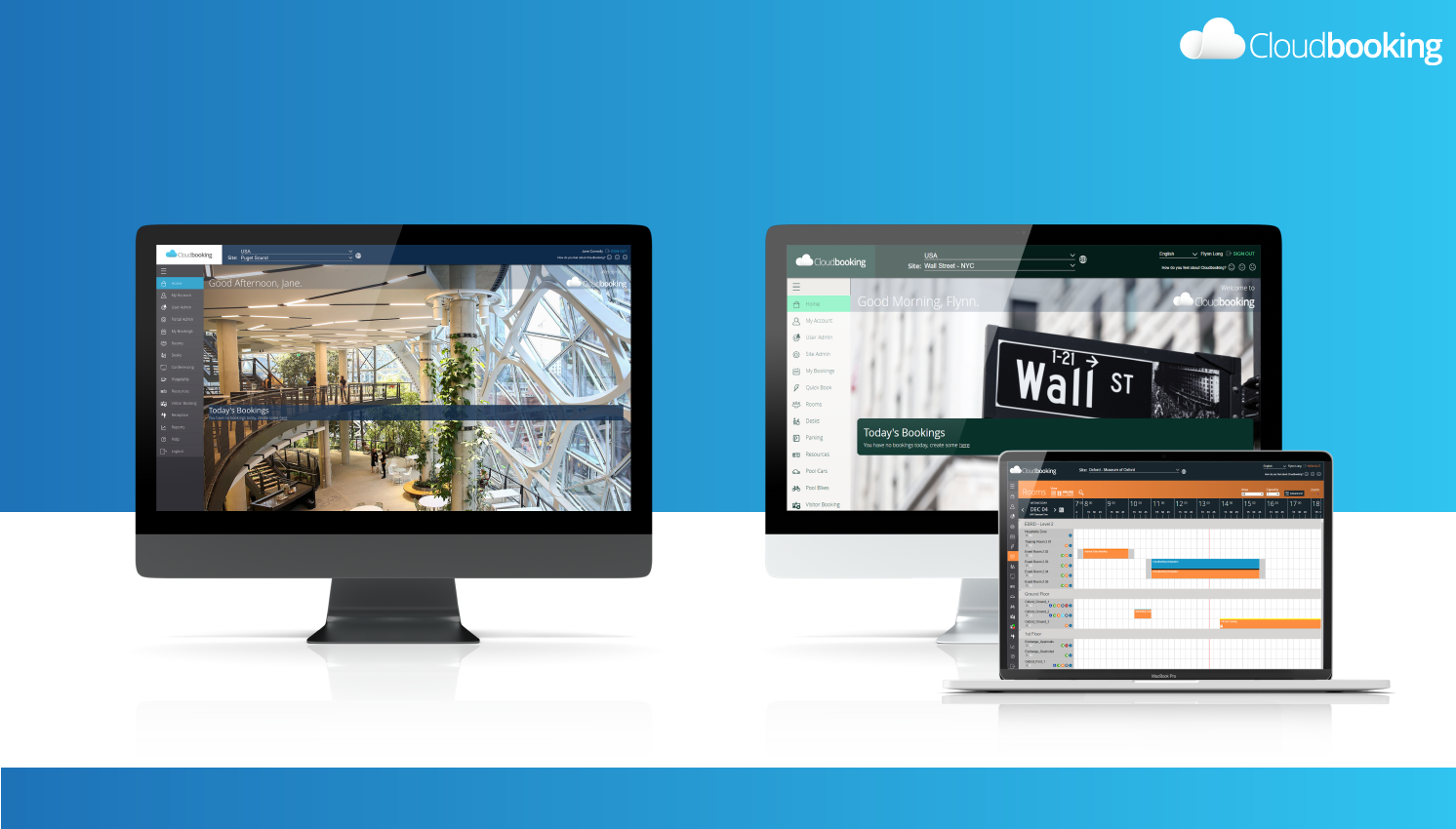
Activity-based working (ABW) sounds like another corporate buzzword that’s come up alongside the rise of remote working due to COVID-19. But the concept of activity-based work has been around for decades. Here’s everything you need to know about activity-based working.
Around the world, organizations of all sizes and industries are trying to improve workplace productivity and employee morale by building flexible and agile workplaces. These changes come in the wake of shifting employee attitudes, such as rising expectations for autonomy at work and a desire to break free of the traditional nine-to-five schedule.
Over 60% of workers would consider quitting if asked to return to the office full-time. This aligns with a recent Pew Research Center survey, which found that 45% of workers left their job in 2021 due to insufficient flexibility in choosing their working hours.
Besides shifting attitudes, technology is arguably the biggest driver of new ways of working. Things like cloud computing, the Internet of Things (IoT), and data analytics are the impetus behind digital transformation in the workplace. It’s why the traditional working model, where employees are assigned a specific desk from 9 p.m. to 5 p.m., is in decline.
In its place are new ways of using office spaces — shared desks that promote collaboration and conversation, bookable meeting rooms for breakout sessions and huddles, and private pods or booths for Zoom calls and deep work, to name a few.
This paradigm is at the heart of what people call activity-based working.
What is activity-based working?
Activity-based working (ABW) is a human-centric approach to work that emphasizes giving employees the freedom to choose from multiple work options or settings based on the kind of work they’re doing. The term was first coined in 1995 by Dutch consultant and author Erik Veldhoen in his 1994 book, The Demise of the Office.
Veldhoen argued that allowing employees to choose where they sit empowers them to structure their days to their liking — making them more productive than those that don’t. This autonomy makes employees more mindful of what they will do in the workplace and why they’re doing it.
These arguments are based on the observation that employees engage in various activities throughout a typical working day and benefit from having different work settings (both physical and virtual) designed specifically for these tasks.
This could mean anything from assigning workspaces or zones for specific activities such as structured meetings, individual deep work, and brainstorming sessions, among others. It could also mean — as is quickly becoming the norm — allowing employees to go hybrid and split their time between working at the office and remotely. This allows smarter and more efficient management of workspaces and facilities for people who prefer being at the office.
Related Reading: The Future of Working from Home: Hybrid Office or Remote Work?
Activity-based working is also a boon for employers
While activity-based working may seem solely an employee-centric workplace strategy, it also benefits employers.
In 1996, Veldhoen + Company, the consulting firm Erik Veldhoen founded and the biggest proponent of activity-based working, led the transition to activity-based work for Interpolis — one of the Netherlands’ largest insurance companies. Introducing flexibility into their working environment helped Interpolis reduce their required office space from two to one building and slash yearly occupancy costs by 45% and 24%, respectively.
Since then, several other companies have also gone ABW.
In 2020, 3M moved its Hong Kong headquarters to a new office space built with activity-based work principles in mind. The new offices boast ABW-focused features such as multifunction meeting rooms with movable glass partitions (allowing the rooms to switch between private meetings or more open training sessions easily), different styles of hot desks, and focus booths for deep work.
Related Reading: What Is Hot Desking? The Ultimate Cloudbooking Guide
Activity-based working by the numbers: 10 ABW statistics you should know
As with any new and radically different approach to employee and workplace management, activity-based working can seem like all hype and no substance. But the numbers don’t lie. Consider the following statistics about the ABW model.
- Our research on employee attitudes shows that 55% of respondents want a mix of office and home-based work. (Cloudbooking)
- A third of employees (34%) said a lack of flexibility hurts their performance and productivity. The rigid structure of their workday makes it challenging to maintain productivity over time. (Harvard Business Review)
- As popular as open offices are, 58% of high-performing employees still need more private spaces for problem-solving work, suggesting the need to have dedicated areas for deep work in the office. (CNBC)
- Despite the popularity of remote work, it seems a sizable portion of millennial and Gen Z workers still see the value of a physical office. Also, 57% and 51% of millennials and Gen Z, respectively, agreed with the statement, “A physical office will be necessary to complete a day’s work in the future.” (Spiceworks)
- A growing number of organizations are catching on to the value of flexible work, and 37% of global organizations plan to increase their use of coworking or flexible space post-pandemic. (JLL)
- In fact, 43% of workers said that flexible working hours helped them become more productive. (Gartner 2021 Digital Worker Experience Survey)
- Flexible workers are happy workers, and 80% of respondents in one survey said they’d be more loyal to their employer if they provided flexible work setups. (Flexjobs)
- Also, 62% of corporate real estate decision-makers in the United States, Europe, the Middle East, and Africa agree that hybrid arrangements will be the future of work. (CBRE)
- People working in coworking spaces, which take inspiration from activity-based working, report levels of thriving that score an average of six on a seven-point scale. More job control was one of the factors behind their satisfaction. (Harvard Business Review)
- Also, 55% of businesses want more spaces for collaboration in their offices to bring people together and inspire teamwork. (Knight Frank)
So, what exactly does activity-based working look like in the office?
It’s one thing to define activity-based working — but what exactly does it look like in the workplace? Veldhoen + Company’s work with Interpolis in 1996 would serve as the blueprint for other organizations seeking to reinvent the office. These include the likes of tech giants Apple and Microsoft and “big four” firms like KPMG and PwC.
Here’s a quick look at some of the most common features you can find in workplaces that have gone ABW.
Shared desks and open collaborative spaces
Rakuten London Office
Source: Rakuten.Today
Open floor plans and shared desks are hallmarks of activity-based workplaces. They afford a sense of freedom and challenge the notion that the dedicated desk is the focal point of workplace productivity.
Gone are the traditional cubicle farms. Employee workstations are now distributed throughout open lounges and desks shared by multiple employees throughout the day. In some offices, desk space is managed using desk booking software, preventing the problem of workers jockeying for space.
This open design, proponents argue, lends itself to collaborative work. The movement and absence of barriers in an open office allow workers to catch up, communicate more closely, and work together on projects.
Focus rooms and quiet nooks
Despite the emphasis on open offices and shared desks, activity-based workplaces are also mindful of the need for privacy. Employees, after all, still need time and space to focus on tasks that require their full attention.
This is where focus rooms and private spaces come in. But unlike traditional dedicated workstations, activity-based workspaces are designed around a variety of individual work settings, whether it’s single-person focus rooms, small meeting rooms for two to four people, or even shared desks in “quiet rooms” similar to a library.
Google’s take on this concept comes in the form of what it calls “Team Pods” — modular spaces that can be reconfigured and made conducive to focused work. Each pod can be adjusted depending on the number of people using the area and outfitted with amenities such as whiteboards, desks, and video conferencing technology.
Huddle rooms and team spaces
Huddle rooms and team rooms are popular areas in activity-based workspaces for group projects and ad-hoc discussions.
Brainstorming Room at Publicis
Source: Officelovin
Different companies have different interpretations of the huddle room; they’re typically smaller than conference rooms and can be situated in a dedicated room (see Publicis’ brainstorming room above) or in an open area away from crowded areas. In most cases, however, they’ll have amenities such as a shared desk, a whiteboard, and LCD screen/s for video conferencing.
Cafe areas and lounges
The tradition of working in a coffee shop goes back several decades. From cafés in Paris to Starbucks, coffee shops have long been places for creativity and discussion. The combination of food, beverages, and comfortable lounge chairs also creates an atmosphere that blurs the lines between socialization and “let’s get some work done” — particularly for mobile workers.
Booking.com’s Multi-purpose Grab-and-Go Café
Source: Office Snapshots
So, it’s no surprise that open café workspaces have also made their way to the modern workplace. While office kitchenettes and cafeterias have long been a fixture of many offices, activity-based workspaces use the coffee shop aesthetic to create an environment for relaxed conversations with colleagues and people who want to do more relaxed work over a cup of coffee or tea.
Conference rooms
Of course, no office would be complete without the quintessential conference or meeting room. They continue to be critical spaces for board meetings, executive gatherings, strategy work, or any other group activity that calls for a more formal business environment.
Formality often distinguishes the conference room or meeting room from, say, huddle rooms or shared desks. In activity-based workplaces, the conference room isn’t just about accommodating groups of people. It’s also about communicating the importance of the activity in the room and how it requires everyone’s attention.
For this reason, ABW-enabled conference rooms will often cater to a wide range of group activities, from training sessions and seminars to panel interviews and product pitches. They’ll also usually have a mix of technology features, such as full video conferencing capabilities, VoIP (voice over IP) setups, and large TVs or projector screens.
Phone booths or solo pods
Sound-proofed phone booths or solo pods are typically smaller than focus rooms — usually accommodating no more than two people at a time. In activity-based workplaces, they provide quiet spaces for individual workers to take video/voice calls and power through tasks that require their full attention — think urgent work with tight deadlines.
Phone/privacy booths also acknowledge that certain activities require isolation from the rest of the workplace. Whether it’s one-on-one meetings with managers, personal phone calls, or deep and focused work, ABW-enabled offices ensure that there are private spaces for people who need them.
What are the elements of activity-based working?
While it can seem that activity-based working is simply about improving space utilization, it’s ultimately a paradigmatic shift that puts people first.
It’s not just about building a cafe-style kitchen or adding shared desks and calling it a day. To truly adopt the ABW mindset, organizations need to understand the driving elements of activity-based working.
1. Culture
Activity-based working recognizes that people will be more productive when given the right tools and spaces for the tasks they need to complete. This requires managers to relinquish some degree of control over their teams and provide workers the autonomy to choose how and where to work.
This sounds simple enough. But in a time when 71% of US senior managers want employees to be on-site full-time after the pandemic, it’s clear that not everyone is on board with flexible working arrangements.
Bottom line? Organizations need to think long and hard if their culture aligns with activity-based working principles. Managers may have to learn new management styles that deviate from having people within their direct line of sight — a tough sell for many leaders today.
Related Reading: The Hybrid Workplace, An Employee Census
2. Technology
New technologies are also a vital factor behind the success of activity-based workplaces. For example, allowing employees to book desk spaces where and when they need them can be the difference between creating an orderly collaborative space and having employees fight over seats.
Cloudbooking’s Desk Booking App
Related Reading: Desk Booking Software: Ultimate Guide to Optimizing Your Workplace
Organizations can also use Industry 4.0 technologies such as the Internet of Things (IoT) and data analytics to track movement in workspaces and identify opportunities to improve space utilization and drive new efficiencies. These technologies are also at the core of modern smart offices — high-tech workplaces that use analytics and connected technology to help people work more efficiently and productively.
3. People
As mentioned earlier, activity-based workplaces are human-centric. They’re designed to empower employees by accounting for individual preferences in working styles and productivity, hence the availability of different workspaces.
However, this doesn’t mean all employees will embrace an ABW office. Research by Leesman on activity-based workplaces shows that “campers” or “squatters” — workers who “perform most/all of their activities at a single work setting and rarely use other locations within the office” — represent 30% of all employees.
The takeaway here is that organizations need to ensure everyone feels heard when transitioning to an activity-based working environment. Provide options for work — don’t force everyone to conform to a single work style.
4. Design
Building a workplace that supports activity-based working requires careful thought and planning. For starters, an organization’s decision-makers must first identify what kind of activities happen in the workplace throughout a typical work day. This allows them to understand how specific spaces can drive tangible improvements in efficiency and productivity.
Design is a broad topic that deserves a separate discussion. But one design element that’s common in most if not all ABW offices is openness. The idea is that open workspaces encourage “workspace collisions” — accidental interactions between colleagues that nurture new ideas and better collaboration.
One study found that a 10% increase in a salesperson’s interactions with coworkers on other teams led to their sales figures also growing by 10%. The conclusion? Inspiration from other people may be the secret sauce workers need to unlock their full potential in the workplace.
Related Reading: How to Design a Workplace to Support Activity-Based Working
Will activity-based working become the norm in a post-pandemic world?
While it’s hard to predict what a post-pandemic world will look like for workplaces worldwide, survey after survey shows that people want to return to the office only if certain conditions are met. Chief among these are hybrid arrangements, where workers come to the office now and then for specific functions such as in-person meetings and critical collaborative work.
Activity-based working provides a paradigm that accommodates these new employee attitudes through physical and virtual workspaces. ABW may not be new, but its principles have become even more relevant in what is quickly shaping up to be the hybrid era of work.
Learn more about activity-based workplaces and new ways of working (NWOW) by following the Cloudbooking blog. Regarding supporting ABW, cloud-based workplace management systems can be the perfect solution to driving efficiency and helping employees work where and when they want. Cloudbooking’s desk and meeting room booking solutions are packed with features to help managers and employees shift to activity-based work. Get in touch with our team to schedule an obligation-free demo.






